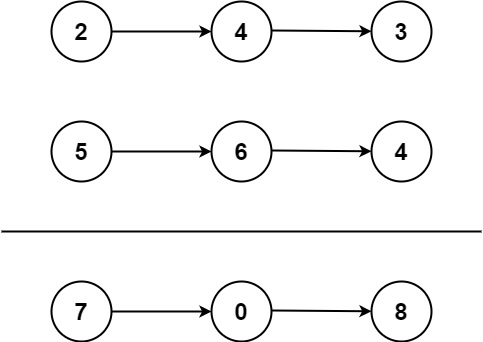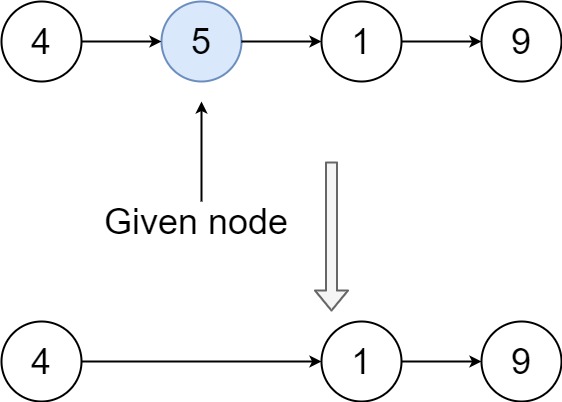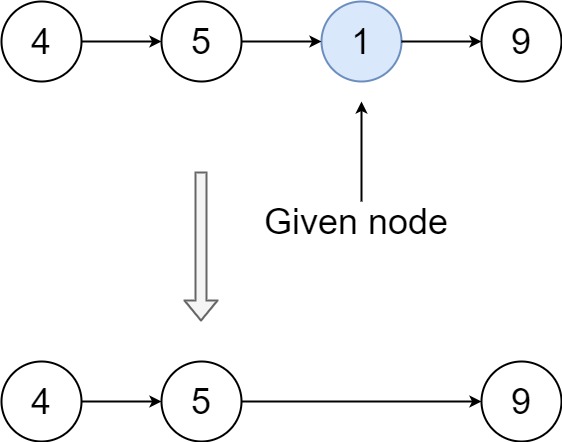📅Day-15 Striver’s SDE Sheet | Linked List Part 1 | Add Two Numbers , Delete Node in a Linked List.
 Payal Kumari
Payal Kumari
Note : Started my 27-day DSA journey with Striver’s SDE Sheet!
I will be journaling every day — recording what I learn, reflecting on it, and sharing it with my network to help fellow learners and aspiring developers.. Learning through videos, resources, and the internet — simplifying logic in my own way with real-world connections. Sharing 2 questions daily: brute-force to optimal, clean Java code, time & space complexity, and key patterns.
This blog series is for anyone preparing for coding interviews — whether you’re a beginner or a revision warrior. Let’s grow together! 🚀
Namaste Developers! 🙏
Welcome to Day 15 of my 27-day DSA journey using Striver’s SDE Sheet!
1️⃣ Add Two Numbers
🔸 Problem Statement:
You are given two non-empty linked lists representing two non-negative integers. The digits are stored in reverse order, and each of their nodes contains a single digit. Add the two numbers and return the sum as a linked list.
You may assume the two numbers do not contain any leading zero, except the number 0 itself.
Example 1:

Input: l1 = [2,4,3], l2 = [5,6,4]
Output: [7,0,8]
Explanation: 342 + 465 = 807.
Example 2:
Input: l1 = [0], l2 = [0]
Output: [0]
Example 3:
Input: l1 = [9,9,9,9,9,9,9], l2 = [9,9,9,9]
Output: [8,9,9,9,0,0,0,1]
Constraints:
The number of nodes in each linked list is in the range
[1, 100].0 <= Node.val <= 9It is guaranteed that the list represents a number that does not have leading zeros.
💠Real-Life Example
Think of it like adding two really long numbers digit by digit, the way we did in school.
Just like in manual addition, we start from the units place (least significant digit), add them, and carry over to the next place if the sum is greater than 9.
(Hinglish:
Jaise school me hum addition karte the — units place se start, carry lete hue tens place, fir hundreds place… waise hi yaha hum linked list ke nodes add karenge.)
💠Brute Force (Naive Thinking)
📍 Idea
Convert both linked lists into numbers.
Add the numbers.
Convert the sum back into a linked list (in reverse order).
📍Steps :
Traverse l1 and build num1
Har node ka value uthao aur string me prepend karo (reverse order maintain karne ke liye).
Example:
l1 = [2,4,3]→"342"(string).
Traverse l2 and build num2
Same process l2 ke liye.
Example:
l2 = [5,6,4]→"465".
Add both numbers
Use
BigIntegertaaki large numbers handle ho sake without overflow.Example:
342 + 465 = 807.
Convert sum to linked list in reverse order
Sum ko string me convert karo.
Har digit ko reverse order me linked list me insert karo.
Example:
"807"→[7,0,8].
import java.math.BigInteger;
class Solution {
public ListNode addTwoNumbers(ListNode l1, ListNode l2) {
// Step 1: Convert l1 to string
StringBuilder s1 = new StringBuilder();
while (l1 != null) {
s1.insert(0, l1.val); // prepend digit
l1 = l1.next;
}
// Step 2: Convert l2 to string
StringBuilder s2 = new StringBuilder();
while (l2 != null) {
s2.insert(0, l2.val); // prepend digit
l2 = l2.next;
}
// Step 3: Use BigInteger to handle very large numbers
BigInteger num1 = new BigInteger(s1.toString());
BigInteger num2 = new BigInteger(s2.toString());
BigInteger sum = num1.add(num2);
// Step 4: Convert sum back to linked list
String sumStr = sum.toString();
ListNode dummy = new ListNode(0);
ListNode curr = dummy;
for (int i = sumStr.length() - 1; i >= 0; i--) {
curr.next = new ListNode(sumStr.charAt(i) - '0');
curr = curr.next;
}
return dummy.next;
}
}
📍Time Complexity
O(n + m) — n and m are lengths of l1 and l2.
String building + BigInteger addition + final conversion.
📍 Space Complexity
- O(n + m) — strings and linked list storage.
Note:
(Hinglish : Yeh brute force hai kyunki hum pure number bana rahe hain aur phir add kar rahe hain — memory usage zyada hai aur linked list ke direct addition ka advantage lose ho jata hai.)
💠Optimal (Digit by Digit Addition)
📍Idea:
Instead of converting to integers, add the digits node-by-node, just like manual addition.
Start from head of both lists (units place).
Keep a carry variable.
Create a new node for each sum’s digit.
Move to next nodes until both lists are done and carry is 0.
📍Steps:
Initialize a dummy head and a
carry = 0.Loop while
l1orl2orcarryis not empty:Take values from
l1andl2(0 if null).Sum = val1 + val2 + carry.
New digit = sum % 10, new carry = sum / 10.
Append to result list.
Return
dummy.next.
class Solution {
public ListNode addTwoNumbers(ListNode l1, ListNode l2) {
ListNode dummy = new ListNode(0);
ListNode curr = dummy;
int carry = 0;
while (l1 != null || l2 != null || carry != 0) {
int val1 = (l1 != null) ? l1.val : 0;
int val2 = (l2 != null) ? l2.val : 0;
int sum = val1 + val2 + carry;
carry = sum / 10;
curr.next = new ListNode(sum % 10);
curr = curr.next;
if (l1 != null) l1 = l1.next;
if (l2 != null) l2 = l2.next;
}
return dummy.next;
}
}
📍Time Complexity
- We traverse each node exactly once → O(max(n, m))
📍Space Complexity
- Output linked list → O(max(n, m))
💠Key Takeaways
✅ Brute Force is simple but can overflow for big numbers.
✅ Optimal is safer, faster, and works for very large inputs.
✅ Always handle carry carefully.
2️⃣ Delete Node in a Linked List
There is a singly-linked list head and we want to delete a node node in it.
You are given the node to be deleted node. You will not be given access to the first node of head.
All the values of the linked list are unique, and it is guaranteed that the given node node is not the last node in the linked list.
Delete the given node. Note that by deleting the node, we do not mean removing it from memory. We mean:
The value of the given node should not exist in the linked list.
The number of nodes in the linked list should decrease by one.
All the values before
nodeshould be in the same order.All the values after
nodeshould be in the same order.
Custom testing:
For the input, you should provide the entire linked list
headand the node to be givennode.nodeshould not be the last node of the list and should be an actual node in the list.We will build the linked list and pass the node to your function.
The output will be the entire list after calling your function.
Example 1:

Input: head = [4,5,1,9], node = 5
Output: [4,1,9]
Explanation: You are given the second node with value 5, the linked list should become 4 -> 1 -> 9 after calling your function.
Example 2:

Input: head = [4,5,1,9], node = 1
Output: [4,5,9]
Explanation: You are given the third node with value 1, the linked list should become 4 -> 5 -> 9 after calling your function.
Constraints:
The number of the nodes in the given list is in the range
[2, 1000].-1000 <= Node.val <= 1000The value of each node in the list is unique.
The
nodeto be deleted is in the list and is not a tail node.
💠Real Life Example
Imagine you’re in a relay race 🏃♂️🏃♀️🏃♂️.
You’re standing in the middle holding the baton (node).
The person before you (previous node) is not visible to you.
But you can still pass the baton to the next person (node.next).
So, instead of removing yourself, you become the next runner by:
Taking their number (value)
Pointing to their next runner (node.next = node.next.next)
💠Brute ForceApproach
Honestly, here brute force doesn’t make sense because:
We don’t have head to traverse.
We must modify only this node.
So, there’s no O(n) traversal approach here.
💠Optimal Approach
📍 Idea
Instead of removing this node directly (which we can’t without the previous pointer),
copy the data from the next node into the current node, then skip the next node.
class Solution {
public void deleteNode(ListNode node) {
// Copy value of the next node into the current node
node.val = node.next.val;
// Skip over the next node
node.next = node.next.next;
}
}
💠Time & Space Complexity
Time Complexity (TC) → O(1)
Because we only modify the given node, no traversal.Space Complexity (SC) → O(1)
No extra data structure used.
(Hinglish : "Yaha trick yeh hai ki tum apne next node ka data copy kar lo aur usko skip kar do. Bas! Tum delete bhi ho gaye aur list ka order bhi maintain raha. Interviewers iss question ko trap banate hain, par yeh actually 2-line ka kaam hai." )
✍️ Final Notes:
If you're just starting your DSA journey like me, don't worry if you don’t get it perfect the first time.
Visualize → Dry Run → Optimize.
Stay consistent, and let’s crack every problem from brute to optimal! 💪
🙏 Special Thanks
A heartfelt thank you to Rajvikraaditya Sir for creating and sharing such an incredible DSA resource with the community (takeuforward). Your structured approach has made DSA more accessible and less intimidating for thousands of learners like me.
If this helped you, do share it with your fellow DSA learners.
Comment with your doubts — I’d love to answer and grow together 🌱
✍️ Payal Kumari 👩💻
My 27-Day DSA Journey with Striver’s Sheet! #dsawithpayal

Subscribe to my newsletter
Read articles from Payal Kumari directly inside your inbox. Subscribe to the newsletter, and don't miss out.
Written by

Payal Kumari
Payal Kumari
I'm a passionate full-stack developer with a strong foundation in the MERN stack—building and maintaining scalable web applications using React.js, Node.js, and Next.js. My journey in open source began with Hacktoberfest 2023, where I made four impactful pull requests that sparked a love for collaborative coding, global learning, and open knowledge sharing. Since then, I’ve contributed to and mentored projects in top open source programs like GSSoC’24, SSOC’24, and C4GT’24. As a Google Gen AI Exchange Hackathon ’24 Finalist and Google’s Women Techmakers (WTM) Ambassador, I’ve been privileged to support diverse communities in building meaningful tech solutions. My work as a Top 50 Mentor for GSSoC ’24 reflects my commitment to nurturing new talent in tech. Beyond development, I serve as a Student Career Guide, Profile Building Expert & Evangelist at Topmate.io, where I conduct workshops, guide students through resume building and career strategy, and help mentees navigate open source and tech careers. Recognized among the Top 5% of mentors and featured on “Topmate Discover,” I take pride in making mentorship accessible and impactful. My technical voice has also been acknowledged by LinkedIn, where I’ve earned the Top Voice badge seven times in domains like web development, programming, and software engineering. In addition, I hold LinkedIn Golden Badges for Research Skills, Interpersonal Skills, Critical Thinking, and Teamwork—signaling a well-rounded approach to both individual contribution and team collaboration. Graduating with an MCA from Chandigarh University in 2023, I’ve continued to fuel my curiosity by writing technical articles and sharing practical MERN stack insights across platforms. Whether it’s building polished UIs, optimizing backend performance, or guiding a mentee through their first pull request, I’m driven by the power of community and continuous learning. Let’s connect! I'm open to collaborations, mentorship, or building something impactful together. Reach out to me at kumaripayal7488@gmail.com or visit my profile on Topmate.io.